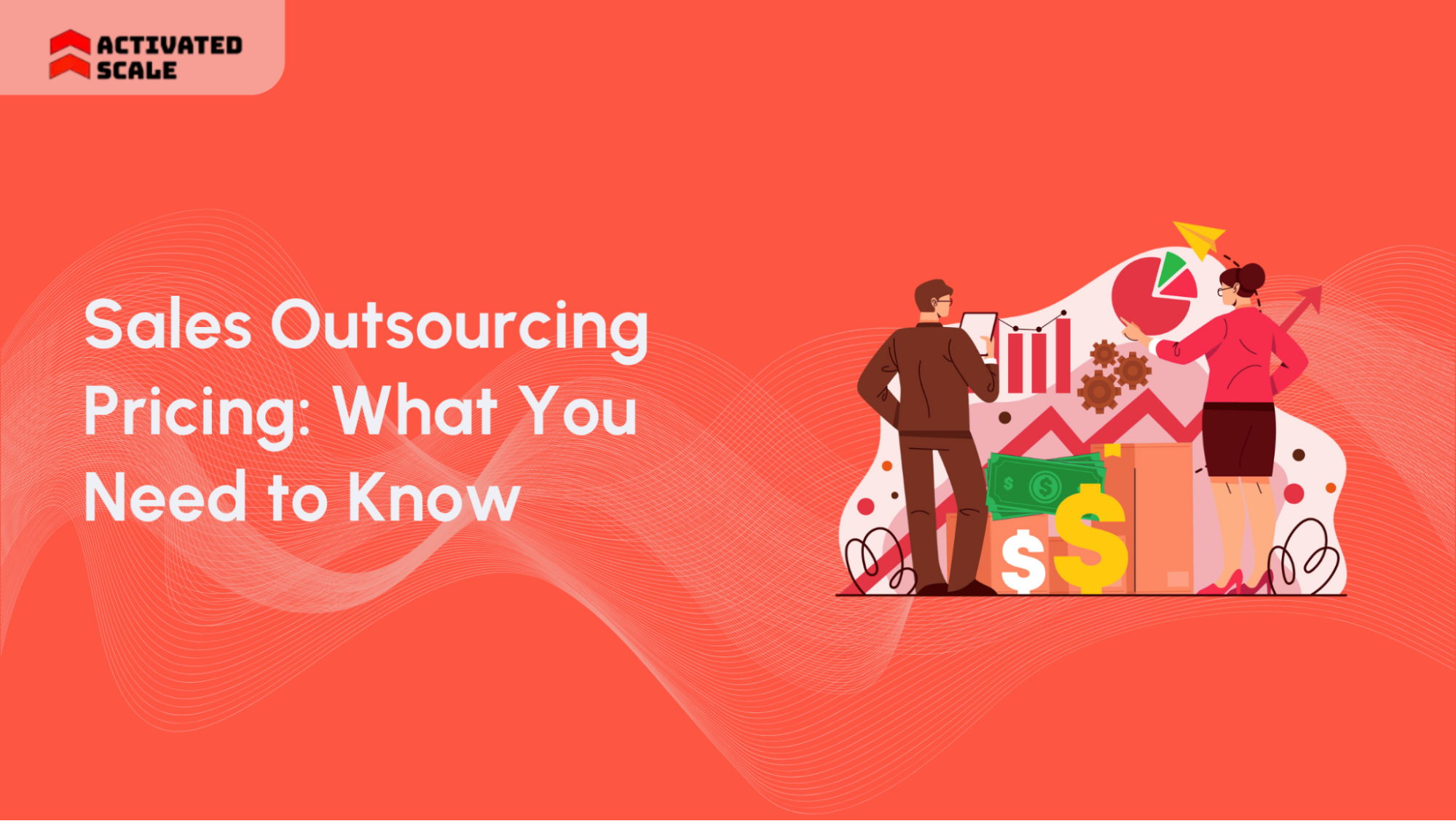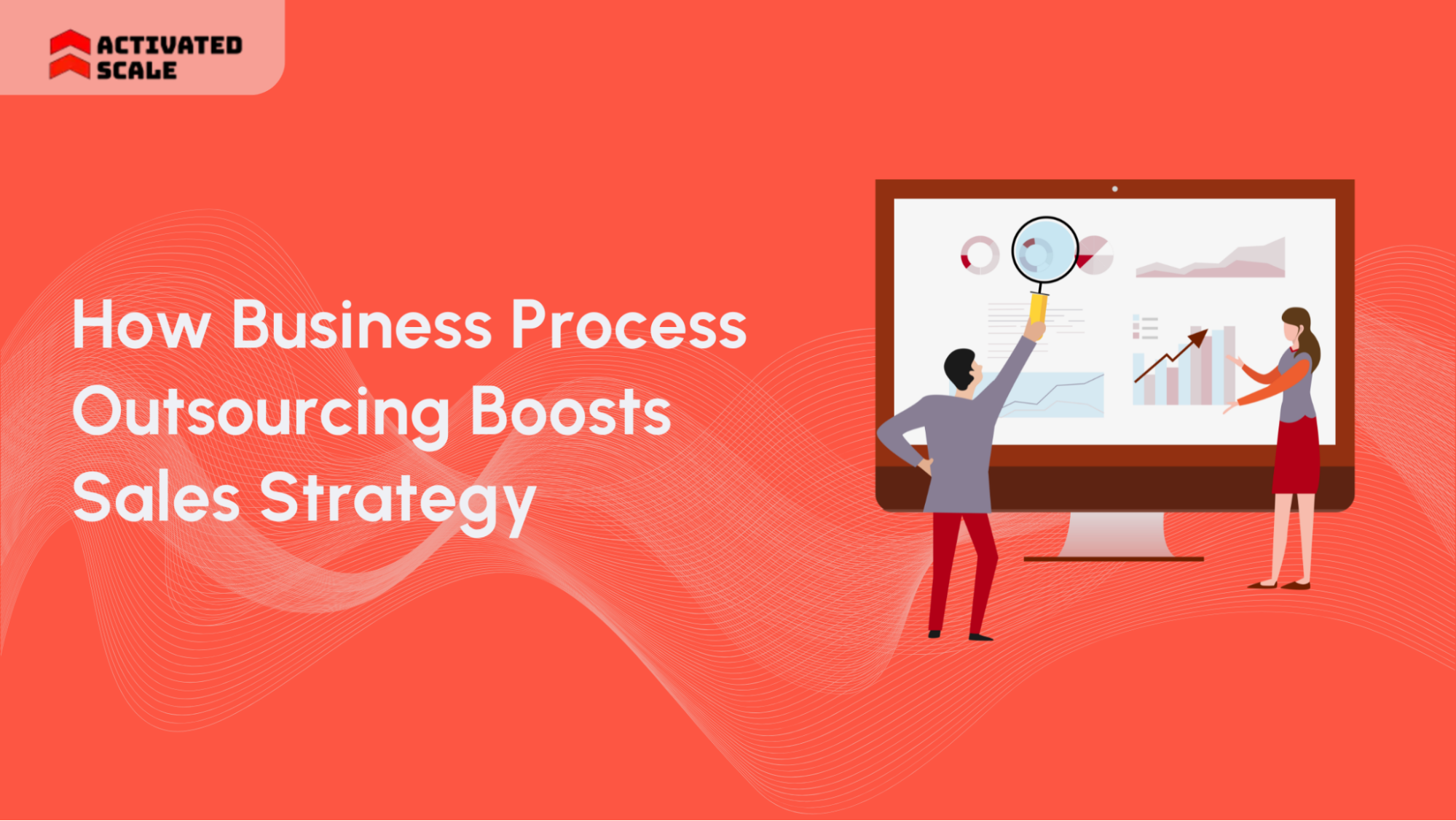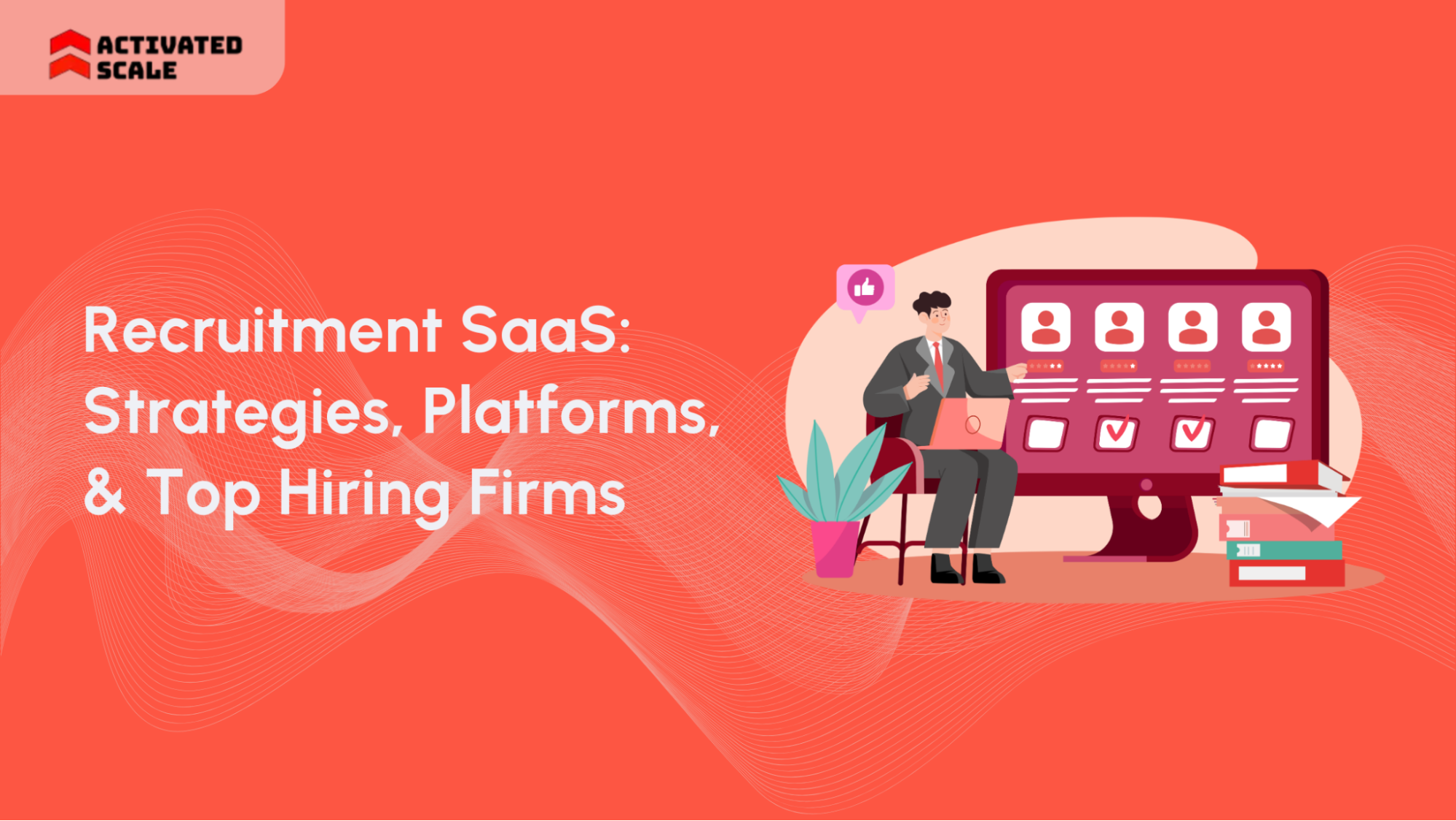Building and scaling a sales team sounds exciting until you see the costs pile up. Salaries, training, tech stacks, and overhead can quickly overwhelm a growing business. That’s why many companies are rethinking the old model and turning to outsourced sales as a smarter, leaner path to growth.
Instead of burning resources on in-house teams, outsourcing gives you instant access to trained professionals, proven processes, and faster market entry; all at a fraction of the cost.
No wonder the global sales outsourcing services market is projected to hit USD 90.04 billion by 2028. In this blog, we’ll unpack sales outsourcing pricing and show you what to expect before you invest.
Key Takeaways:
- Outsourcing sales offers flexibility and scalability while reducing overhead.
- Pricing depends on the sales team structure, process complexity, and industry needs.
- Different pricing models (retainer, performance-based, pay-per-lead) suit various business goals.
- In-house teams come with hidden costs like salaries, benefits, and training.
- Choosing the right outsourcing partner ensures alignment, smooth communication, and effective results.
What is Sales Outsourcing and How Much Does it Cost to Outsource Sales?
Sales outsourcing is when a company partners with an external team to handle all or part of its sales process, from lead generation to closing deals. Instead of carrying the high costs of building and managing a full in-house team, businesses pay a set monthly fee or performance-based pricing, making it far more cost-effective.
This model gives companies access to skilled sales professionals, proven processes, and faster market entry. Costs typically range from $3,500 to $15,000 per month, depending on scope, industry, and pricing model (monthly retainer or performance-based).
What Influences the Cost of Outsourcing Sales?
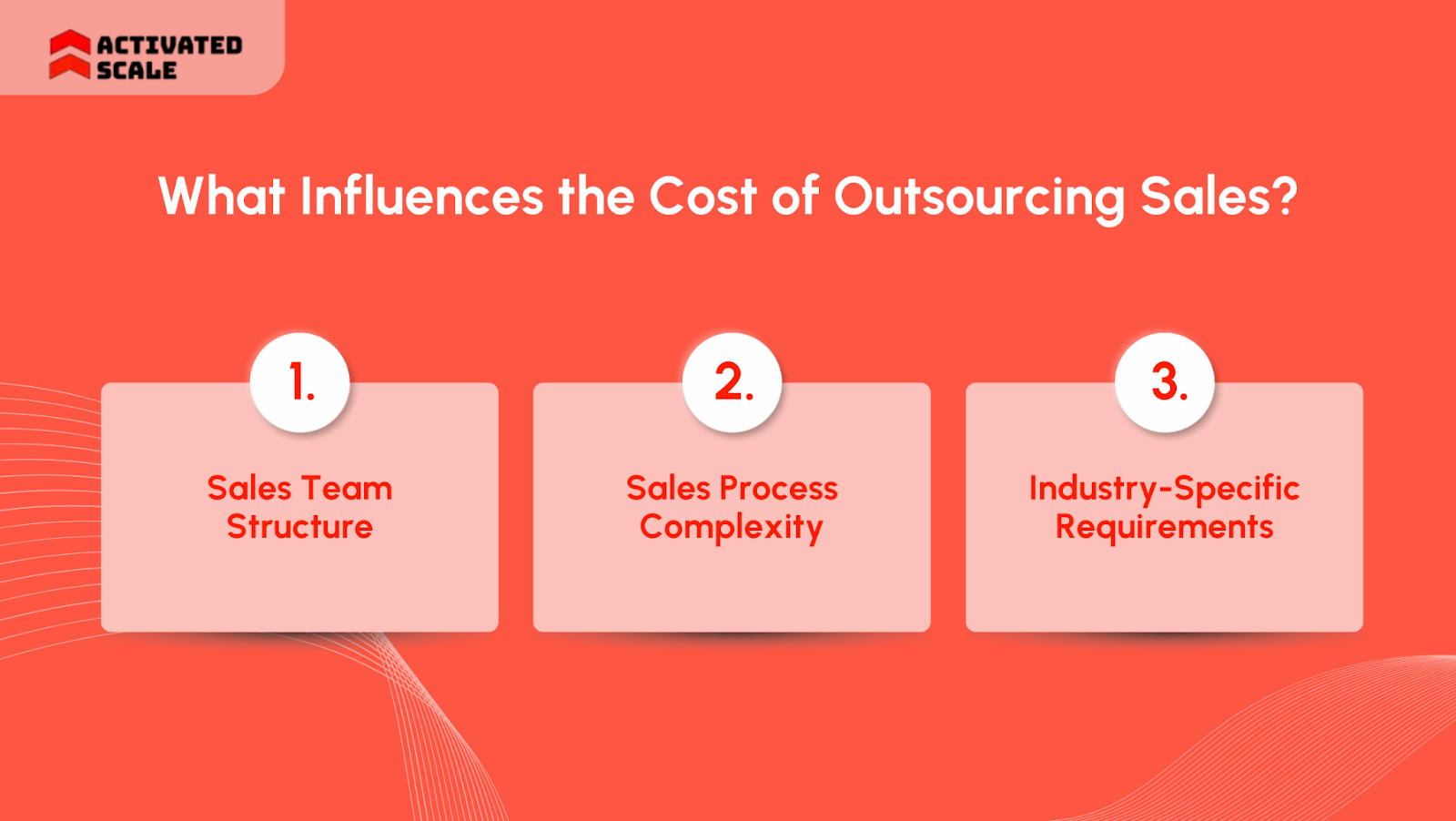
When considering outsourcing your sales, it’s important to understand the following factors that influence pricing.
1. Sales Team Structure
The makeup of your outsourced sales team, including its size, experience, and skill level, is one of the biggest cost drivers. A smaller team focused on simple tasks will come at a lower cost. Meanwhile, a highly skilled team tasked with closing complex deals or managing large accounts will demand a higher fee.
2. Sales Process Complexity
A straightforward sales cycle is generally less expensive to outsource than a complex, multi-step process. If your sales process involves several touchpoints, custom solutions, or long-term relationships, expect higher costs due to the need for specialized expertise.
3. Industry-Specific Requirements
Certain industries have more intricate sales processes that require highly specialized knowledge, which in turn drives up costs. For example, B2B tech or SaaS sales often require deep product understanding and a consultative sales approach, whereas more transactional B2C sales can be less costly.
Also Read: Why Startups Should Choose Contract-Based Sales Leadership to Scale Faster
What are the Sales Outsourcing Pricing Models?
The right pricing model is important for enhancing the effectiveness of your outsourced sales. Each pricing structure comes with its benefits and will depend on your business's specific needs and growth stage. These include:
1. Retainer-Based Pricing
A fixed monthly fee, typically used when businesses need ongoing support. This model is ideal for consistent sales operations, where you need to maintain steady lead generation or customer outreach. For small businesses, this typically costs around $8,500/month, while mid-sized companies may pay $12,000/month, and larger corporations may exceed $15,000/month.
2. Performance-Based Pricing
In this model, you only pay for the results, whether that’s leads, sales, or appointments. This performance-driven approach aligns the outsourced team’s incentives with your goals, ensuring that you only pay for tangible success. The cost here may typically be 5% to 20% of sales.
3. Pay-Per-Lead / Appointment
This cost-effective model allows you to pay based on the number of leads or scheduled appointments. For example, businesses might pay $50–$300 per lead and $500–$700 per appointment scheduled. It's ideal for businesses looking for a more results-oriented approach without long-term commitments.
Breaking Down the Costs of Sales Outsourcing
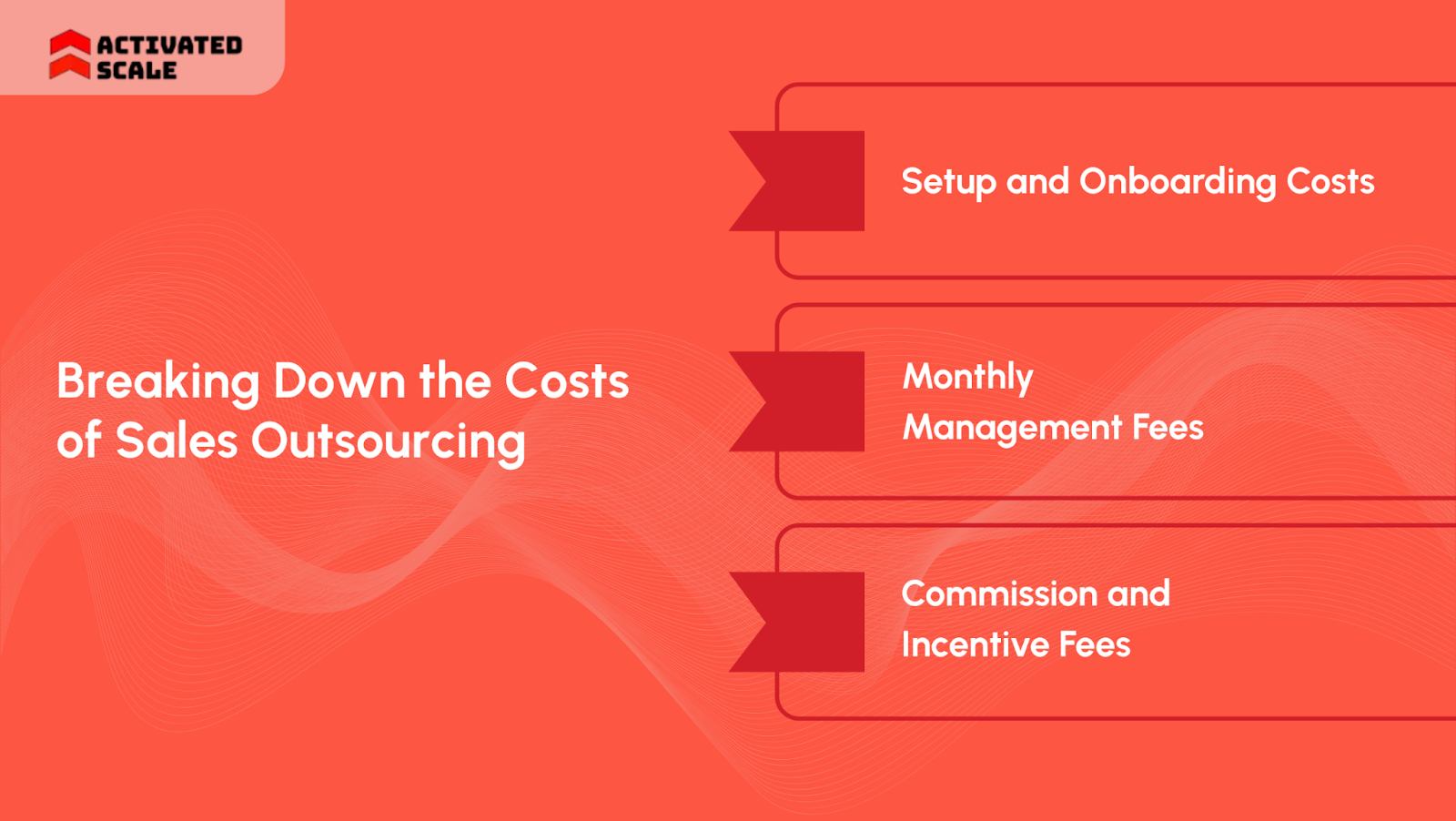
Outsourcing sales involves several cost components that contribute to the overall pricing. These include initial setup costs, monthly management fees, and performance-based incentives.
1. Setup and Onboarding Costs
Setup and onboarding costs are the initial costs associated with integrating the outsourced team into your business. It includes technology integration, team training, and alignment with your sales processes and goals.
2. Monthly Management Fees
This is the recurring fee for ongoing outsourced services. It covers the cost of maintaining your sales team, which often includes CRM tools, regular reporting, and performance management.
3. Commission and Incentive Fees
Performance-based compensation is often part of the cost structure. These fees incentivize your outsourced team to hit key milestones, like closing deals or generating leads, making it a results-driven model.
How to Determine and Evaluate Your Sales Outsourcing Budget and ROI?
When deciding to outsource sales, it's essential to set a clear budget and effectively measure ROI. This section combines both aspects, ensuring you're optimizing your investment while achieving growth targets. Here’s how you can determine the right budget and evaluate the returns:
- Identify the Key Metrics for Your Business Needs: Start by identifying key performance indicators (KPIs) that align with your business objectives. Focus on metrics such as lead conversion rate, customer acquisition cost (CAC), and sales cycle length to track progress effectively.
- Align Your Budget with Sales Growth Goals: Ensure that your budget aligns with both immediate sales targets and long-term growth plans. Consider flexibility for market shifts and scalability, ensuring you can ramp up or scale back according to business conditions.
- Evaluate the ROI of Sales Outsourcing: After allocating the budget, consistently assess the ROI by monitoring sales performance. Track how outsourcing accelerates market penetration, increases sales velocity, and reduces overhead costs.
By aligning your budget with your goals and regularly evaluating ROI, you can ensure that your sales outsourcing efforts are both efficient and impactful.
In-House vs. Outsourced Sales: Cost Comparison
Maintaining an in-house sales team can be costly. For example, the average salary of a U.S. sales manager is $71,488 annually, not factoring in benefits, training, and overhead. Below is a comparison of in-house versus outsourced sales to help you understand the true cost:
Comparing these costs allows businesses to choose the most cost-effective sales model for growth.
Also Read: Scale Your Sales Team Without the Burden of Full-Time Hires
Outsourced Sales for Small vs. Large Businesses
Sales outsourcing is a versatile strategy, but its impact can vary significantly depending on the size and complexity of the business. Small and large businesses have different sales needs, which influence how they can best use outsourcing:
No matter the size of your business, outsourcing sales allows you to optimize your resources, streamline operations, and accelerate growth with minimal overhead.
How to Choose the Right Outsourcing Partner?
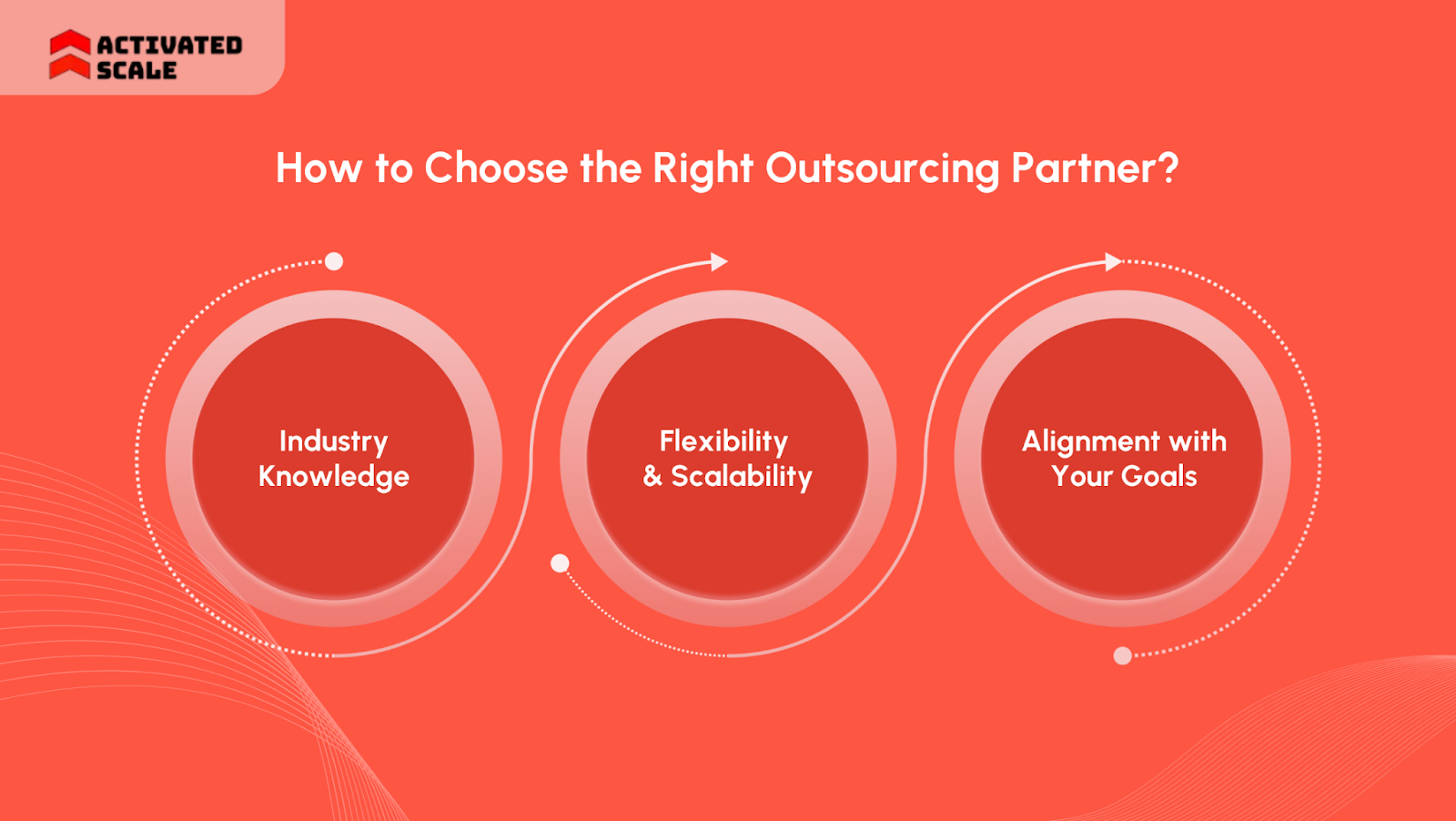
The success of your sales outsourcing efforts depends on selecting the right partner. Look for an outsourcing provider who aligns with your goals, understands your industry, and can scale with your needs.
1. Experience and Industry Knowledge
An experienced partner with deep industry knowledge can tailor sales strategies that suit your market and customer needs. This helps in optimizing performance and reducing costs.
2. Flexibility and Scalability
Choose a partner who can adjust to your changing needs, whether you need to scale operations during peak seasons or scale back during slower months.
3. Communication and Alignment with Your Goals
Regular communication and a clear agreement on goals are key to ensuring that the outsourced team delivers the right results and stays aligned with your brand’s values.
Also Read: Commission-Only Sales Jobs
Partner with Activated Scale for Your Sales Outsourcing Needs
Activated Scale connects you with U.S.-based, pre-vetted sales professionals to handle your lead generation, full-cycle sales, and sales leadership. Our flexible, results-driven solutions are designed to scale with your business, ensuring seamless integration and measurable growth without the long-term commitments of in-house teams.
Our pricing is designed to be flexible and tailored to meet the diverse needs of your business:
- Fractional SDR/BDR: $3,500/month + commission. Ideal for driving top-of-funnel activities, optimizing outbound sales strategies, and setting up cold outreach through various channels.
- Fractional Account Executive: $4,000 - $7,000/month + commission. Perfect for managing the full sales cycle, from prospecting to closing, helping generate new revenue and drive growth.
- Fractional VP of Sales: $8,000 - $15,000/month + bonus. Ideal for optimizing your Go-To-Market strategy, refining sales processes, and scaling your team, with expert coaching and leadership.
No matter the size of your business, Activated Scale provides the right sales talent to accelerate growth, without the overhead of traditional hiring.
Conclusion
Outsourcing direct sales provides the flexibility to scale without the burden of building an in-house team. By understanding pricing models, key cost drivers, and aligning with your business goals, you can maximize efficiency and ROI. Choosing the right partner ensures success and a seamless sales process.
Activated Scale connects you with U.S. based, pre-vetted sales professionals tailored to your business needs. We offer scalable, flexible solutions designed to boost your sales results without the overhead.
Book a consultation with us today to discover how Activated Scale can streamline your sales operations and support growth.
Frequently Asked Questions
How to calculate the cost of outsourcing?
The cost of outsourcing depends on factors like the sales team's structure, pricing model (retainer, performance-based), industry requirements, and the complexity of the sales process. Calculating involves evaluating setup costs, monthly management fees, and performance incentives.
What is a pricing model in an outsourcing contract?
A pricing model in an outsourcing contract refers to how a business pays for sales services, commonly including retainer-based, performance-based, or pay-per-lead/appointment models. Each offers different cost structures based on results and service scope.
What percentage of gross sales should you expect to pay for outsourcing your sales if you hire a company to do the sales for you?
Typically, outsourcing companies charge 10-25% of gross sales or revenue for their services. This depends on the contract terms, sales volume, and type of engagement (e.g., commission, performance-based).
Is sales outsourcing suitable for small businesses or only large companies?
Sales outsourcing is suitable for both small and large businesses. Small businesses benefit from the flexibility and scalability it offers, while large businesses often utilize it to optimize specific aspects of their sales processes or expand into new markets.
The Ultimate Guide to Hiring a Salesperson!
Get the step-by-step guide to hiring, onboarding, and ensuring success!
_edi.png)
